Keywords: PTSD Resolution.
There is a difference between release and resolution. Both are potentially beneficial and release can lead to a resolution. Release, however, is mostly only temporary, as the dynamics between what happened and the overwhelming emotions that are linked to it are still intact.
For example, someone who has witnessed a car accident with fatal consequences, and who is overcome by shock and a sense of helplessness, will suffer of a state of hyperarousal.
Triggers, Flashbacks, and PTSD Resolution
Flashbacks and thinking about the accident will bring back the emotions of shock and profound disturbance. Similarly, additional stress or even everyday stress can stir up memories of the accident and activate a state of hyperarousal.
Thereby, it becomes a vicious cycle wherein any stress or even perceived stress triggers flashbacks along with the overwhelming emotional linkage. All this usually happens in an instant and doesn't necessarily require much to trigger it. It could be a remark made by someone, a barking dog or a loud bang, or even meeting people in a new situation which may excite additional stress within the system.
When Resilience is Lost: Post-Traumatic Stress
Complex Trauma or PTSD doesn't just occur out of the blue. Most of us can deal with a number of stressful events before we "crack". When we have enough resilience, an event like witnessing a fatal accident might bring about an overwhelming sense of shock for some time, but if there is enough energy and support available the hyperarousal will very likely, given some time, be contained, and our nervous system will regain its normal sense of integrity.
When suffering from Post-Traumatic Stress Disorder certain activities or intense exercise can assist in diffusing or releasing feelings of hyperarousal. It can certainly assist in making life manageable—up to a point.
Hyperarousal, Release, and Resolution: Finding What Works for PTSD Resolution
The abiding danger is that hyperarousal most often will build up again, as it is still, in a sensate way, linked to the event, as in the example of witnessing an accident. Any association with the event will, in turn, stimulate the reemergence of the emotions that are still related to it. Releasement can then become a necessity and be quite addictive, preventing resolution from coming about.
It is the providing of containment and the "holding" of the emotional charge in awareness that helps to digest excess energy of the body and mind. By bringing awareness to that state and negating the event to which it is related, a pathway to resolution is opened.
Where are you in your process of PTSD resolution? Leave your comment below.

I know that riding my bike for 11 miles or swimming laps for an hour is great for energy dumping (releasing the energy) but, that is nothing more than a temporary (but necessary) fix. It helps the symptoms, but resolves nothing.
This is helpful, thank you! I have been teaching high intensity group fitness classes for 25 years now & over the past 4 years become incapable of continuing due to a (workplace sustained) knee injury. This, coupled with new traumas such as loss of a baby on top of lifelong existing traumas, has added up to me not having the means to discharge that energy from my nervous system! So many layers of course. Including the loss of part of my identity – ie; very skilled fitness professional, makes for a very rocky few years indeed!
Embarking on forging a new way forward is daunting but necessary .